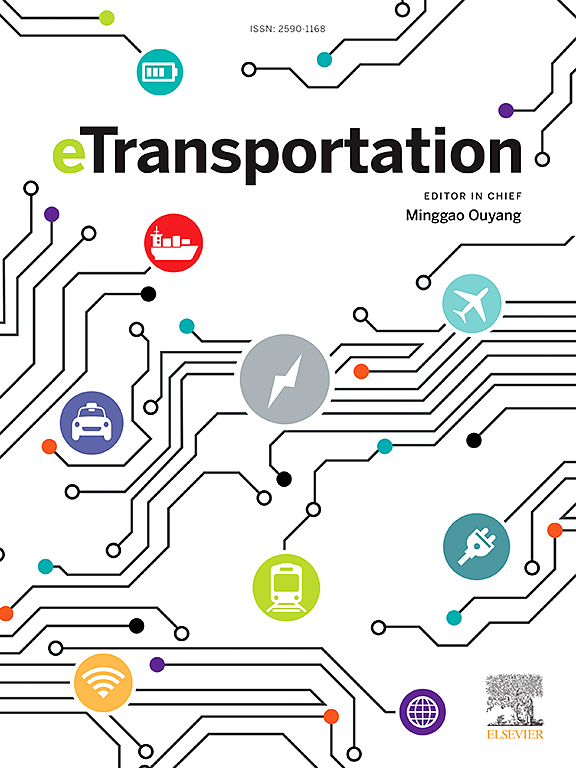Advanced pulse charging strategies enhancing performances of lithium-ion battery: Fundamentals, advances and outlooks
IF 17
1区 工程技术
Q1 ENERGY & FUELS
引用次数: 0
Abstract
Li-ion batteries (LIBs) play a crucial role in powering electric vehicles (EVs) due to their high voltage, compact size, and exceptional energy density. However, the limitations associated with rapid charging remain a significant barrier to the expansion of EV market, prompting ongoing research into more efficient and safer charging techniques. A key challenge lies in balancing charging speed with battery longevity. The widely adopted constant current-constant voltage (CC-CV) charging protocol often results in polarization and lithium plating during high-speed charging, which poses serious risks to battery health. In response, pulse charging (PC) has emerged as a promising alternative for enhancing the stability of LIBs across various chemistries. Internal factors such as diffusion resistance, polarization, and precipitation critically impact external parameters such as voltage, current, and capacity. pulse charging mitigates these issues by reducing internal polarization, relieving structural strain, promoting uniform lithium plating, constructing low-resistance solid electrolyte interface (SEI) films, and improving performance under low-temperature conditions. This review provides a comprehensive analysis of the effect of pulse charging on battery cycle stability and discusses optimized strategies for charging management, thermal regulation, and the orthogonal design-coupling model, all aimed at reducing charging time while maximizing battery life in EVs.

提高锂离子电池性能的先进脉冲充电策略:基础、进展与展望
锂离子电池(LIBs)由于其高电压、紧凑的尺寸和卓越的能量密度,在为电动汽车(ev)供电方面发挥着至关重要的作用。然而,与快速充电相关的限制仍然是电动汽车市场扩张的重大障碍,促使人们不断研究更高效、更安全的充电技术。一个关键的挑战在于平衡充电速度和电池寿命。目前广泛采用的恒流-恒压(CC-CV)充电方式在高速充电过程中容易产生极化和镀锂现象,对电池健康造成严重威胁。因此,脉冲充电(PC)已成为一种有前途的替代方案,可以增强lib在各种化学物质中的稳定性。扩散阻力、极化和沉淀等内部因素严重影响电压、电流和容量等外部参数。脉冲充电通过减少内部极化、缓解结构应变、促进均匀的锂电镀、构建低电阻固体电解质界面(SEI)薄膜以及提高低温条件下的性能来缓解这些问题。本文全面分析了脉冲充电对电池循环稳定性的影响,并讨论了充电管理、热调节和正交设计耦合模型的优化策略,旨在减少电动汽车的充电时间,最大限度地提高电池寿命。
本文章由计算机程序翻译,如有差异,请以英文原文为准。
求助全文
约1分钟内获得全文
求助全文
来源期刊

Etransportation
Engineering-Automotive Engineering
CiteScore
19.80
自引率
12.60%
发文量
57
审稿时长
39 days
期刊介绍:
eTransportation is a scholarly journal that aims to advance knowledge in the field of electric transportation. It focuses on all modes of transportation that utilize electricity as their primary source of energy, including electric vehicles, trains, ships, and aircraft. The journal covers all stages of research, development, and testing of new technologies, systems, and devices related to electrical transportation.
The journal welcomes the use of simulation and analysis tools at the system, transport, or device level. Its primary emphasis is on the study of the electrical and electronic aspects of transportation systems. However, it also considers research on mechanical parts or subsystems of vehicles if there is a clear interaction with electrical or electronic equipment.
Please note that this journal excludes other aspects such as sociological, political, regulatory, or environmental factors from its scope.
 求助内容:
求助内容: 应助结果提醒方式:
应助结果提醒方式:


